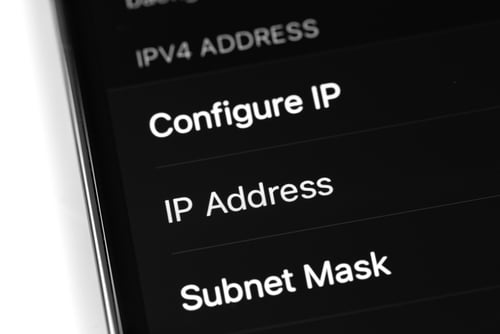
DISCLOSURE: This post may contain affiliate links, meaning when you click the links and make a purchase, we receive a commission.
Domain Name System (DNS) is one of the most fundamental systems in place that keep the internet running by mapping domain names to numerical IP addresses on the internet. There are generally two servers in place for any domain: dns1.nameservers.com and dns2.nameservices.com.
But what are name servers, and how do they play into the whole DNS mapping algorithm? And what exactly does dns1.namservices.com mean? Well, hold your horses because we’ve got all your answers right here!
What Is The Domain Name System?
Whenever you enter a website name such as ‘Facebook.com’, there are some processes executed on the backend by the DNS. These include getting the IP address corresponding to the domain name you just entered to lead you to where the website is hosted.
DNS plays a major role in getting the appropriate IP address for a domain name as it stores the corresponding IP addresses for a website in Domain name servers.
The DNS also has a number of different records that it uses to access different information about your website, including the Nameserver, the email server, the IP server, and the authoritative server.
What Is The Nameserver?
Simply put, the Nameserver defines your domain’s current DNS provider. Once you are directed to your DNS provider, you can retrieve the IP address of a domain so that all the relevant information can be displayed on the website you’re trying to access.
The nameserver is often referred to as the internet’s phonebook, with each domain name corresponding to a particular IP address.
What is dns1.nameservices.com Servers
Generally, there are at least two different servers for all domains that can be used to retrieve the IP address of a given domain: dns1.nameservice.com and dns2.nameservice.com. Whenever a request is made, it is sent to either one of these two servers, which, in turn, returns the IP address of the name server or email server of the website you’re trying to access.
How Is The IP Address Of A Domain Accessed?
The process through which the IP address of a website is returned is not as complicated as it may seem. We’ve simplified it down below:
- The DNS Resolver receives the request and tries to figure out where the site you want to go is located on the internet.
- To do so, it sends the request to the Root Server, which returns the Top Level Domain (TLD) address of the domain being searched. TLDs are the higher level domains such as .com and .net.
- The TLD server then returns the authoritative name server for that website.
- The authoritative nameserver can access the records and fetch the IP address of the requested domain. After that, the requested website, along with all of its contents, is displayed on the screen.
Bare in mind that this process will only happen if you are visiting a site for the first time or after a long time. If it is a site that you regularly visit, the IP address will be retrieved from the cache of a local server, which will take considerably less time.
Difference Between Root, Top Level Domain (TLD), And Authoritative Servers
The best way to understand the difference between all these types of DNS servers is to imagine a hierarchy with Root servers at the top. Root servers are responsible for redirecting the request to the appropriate TLD server (next on the hierarchy) based on which extension the request is using, for example, .net, .edu, .gov, and so on.
Next, the TLD server is responsible for keeping a record of all the authoritative servers in their specific extension. At the bottom of the hierarchy are Authoritative servers, which are responsible for holding and returning the IP address of the domain that is being requested by the respective TLD.
Types Of DNS Records
There are a variety of different DNS records corresponding to every website or domain, which help to access the mail server or the nameserver of a domain. Here are the most commonly used DNS Records to set up websites:
NS Record
The NameServer (NS) record for a website specifies the authoritative DNS server for a domain. In simple words, it tells the internet where your DNS records are located for the website you’re trying to access.
It is able to point to where you will be able to find the IP address of a requested domain. Multiple NS records are usually appointed to a single domain to allow for some margin of error if one nameserver fails unexpectedly.
IP Record
The IP record allows the DNS to extract the IP address of a domain. This is one of the most important DNS records as, without the IP Record, there would be no way to convert the domain name into the numerical IP address.
With that said, there are two different types of IP records: A Record and AAAA Record. Both of these have more or less the same function but a few key differences:
- A Record
The A record is used to fetch the IP address of IPV4 addresses, that is, IP addresses with four bytes of data that make up the different and unique IP addresses in the world.
- AAAA Record
The AAAA record allows the DNS to retrieve IPs following the IPV6 addressing scheme. This IP addressing method comprises 16 bytes of data, allowing it to cater to far more unique IPs than the conventional IPV4 addressing scheme.
CNAME Record
The CNAME or canonical name record allows you to access a particular domain even if you use different names to access it. For example, typing “facebook.com” and “fb.com” will take you to the same domain, “Facebook.com”.
In this case, “facebook.com’ and “fb.com” are the alias names used to point to the actual nameserver of Facebook. Following this, the nameserver can make use of an A record or AAAA record to extract the relevant IP address of the website.
MX Record
The MX record shows where the emails for a particular domain should be routed to. This allows your domain to redirect its mail to a mail server. Furthermore, you can also create private email servers which allow for efficient communication between a group or an organization and also give a professional outlook to your company or business.
Final Thoughts
Nameservers, among other records used by DNS, are an essential part of the internet system and point to the servers that can direct you to the IP address of a given domain.
There are usually multiple nameservers for a single website to ensure that the website is functional. We hope our short guide removed any misunderstandings you had about dns1.nameservices.com!




